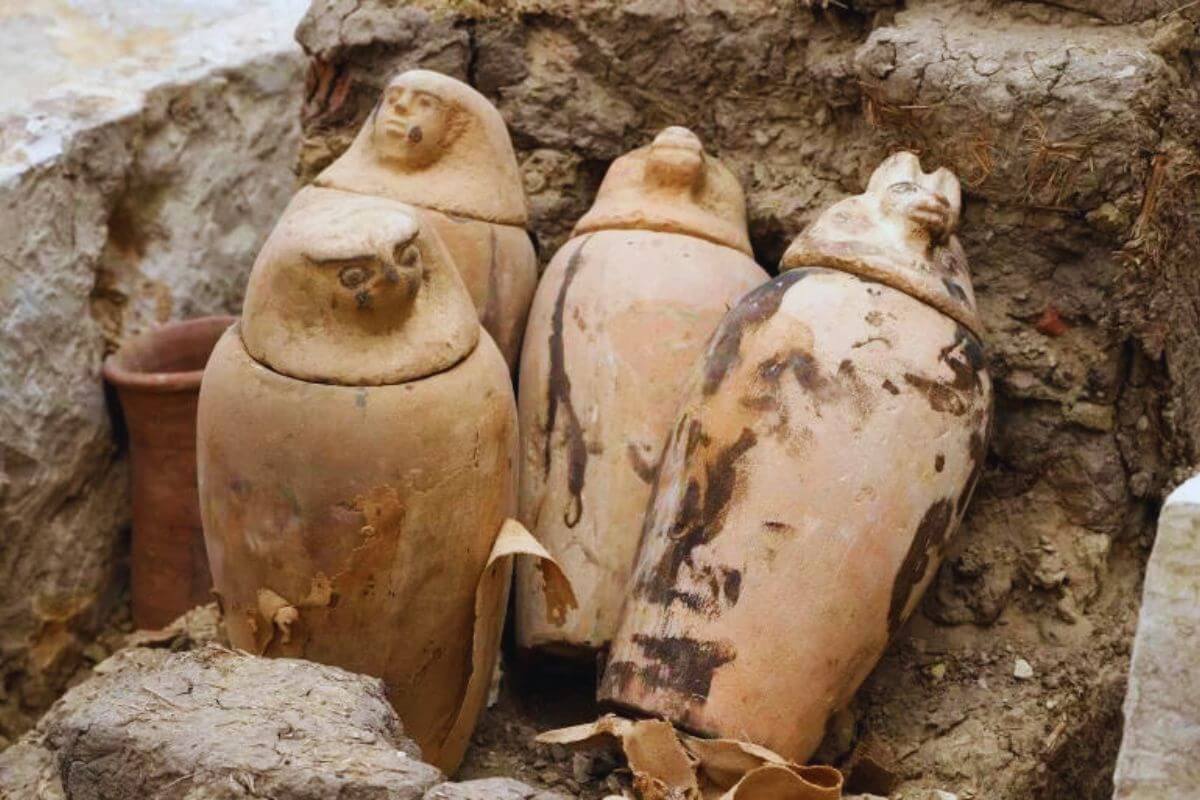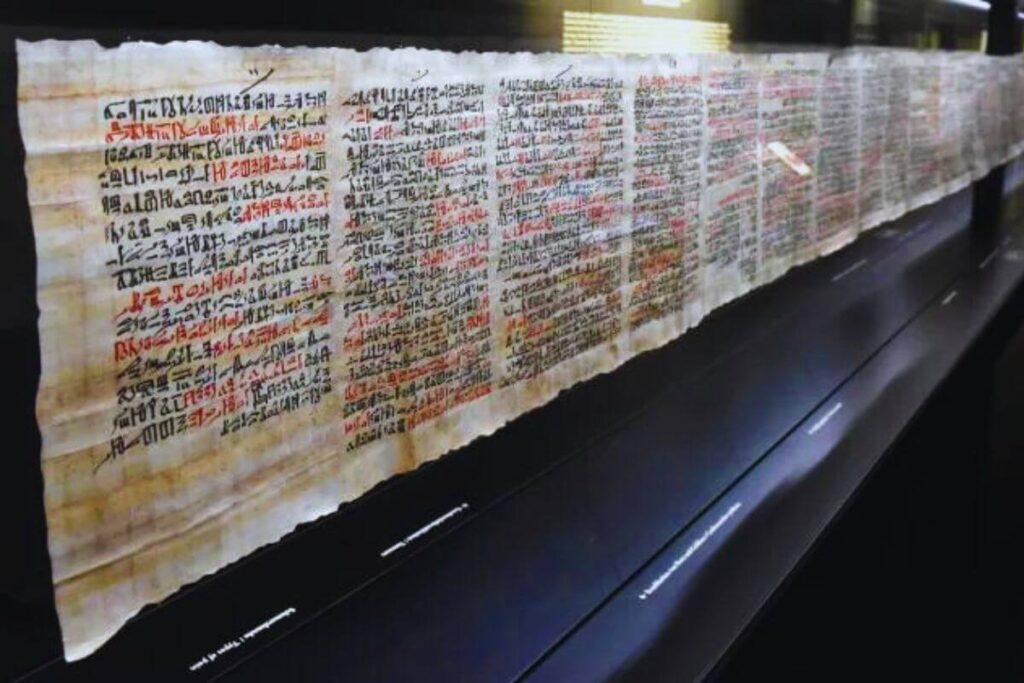Ancient Egyptians: Did They Use Surgery for Brain Cancer?

- BY Dhiren
- June 9, 2024
- Read in 7 Minutes
A study has found evidence that suggests the Egyptians may have attempted surgical cancer treatment over 4,000 years ago.
The research was published in the journal Frontiers in Medicine in May. It adds to a growing corpus of work that aims to further our understanding of how one of the most significant civilizations in history attempted to combat diseases, particularly ones as fatal as cancer.

Why does this discovery matter?
Researchers have long known that Egyptian medicine was more developed than many other ancient civilizations. In that era, dental fillings and bone setting were standard procedures, and some of the oldest references to physicians came from that time.
The level to which its doctors may have attempted to examine and treat malignant brain tumors was unknown to experts until recently.
Researchers examining historical skulls claim to have discovered tangible proof of invasive brain tumor surgery. It demonstrates that doctors were attempting to expand their knowledge of the illness known as cancer.
The finding might represent the earliest instance of the disease’s surgical treatment in ancient Egypt.
As a palaeopathologist studying ancient diseases at the University of Santiago de Compostela in Spain, lead author Edgard Camaros told Al Jazeera, “Our research notes, by looking directly into human bones with cancer lesions, that they performed an oncological surgery.” “We’re not sure if this was an exploratory autopsy or a possible surgical treatment, but it was undoubtedly an oncological surgery that clarified what we now refer to as cancer.”
Researchers Albert Isidro of the University Hospital Sagrat Cor in Spain and Tatiana Tondini of the University of Tubingen in Germany co-authored the study with Camaros. They collaborated on the study as co-authors.
Also Read, Johnson and Johnson Fined $260M in Latest Talc Trial, Oregon jury says
How did researchers find proof of ancient surgery?
The evidence for both general head injury repair and more specialized cancer surgery performed in ancient Egypt came from two-thousand-year-old skulls.
Archaeologists initially found both skulls in Egypt in the middle of the 1800s. They then brought them to the University of Cambridge’s Duckworth Laboratory skull collections in the United Kingdom for study.
In October 2022, the use of sophisticated technology, including computed tomography (CT) imaging, made fresh evidence of surgical procedures visible. This technology, often employed in medical therapy to produce precise inside images of the body, revealed the evidence.
Experts believe that Skull number 236 dates from 2687 BC to 2345 BC and belonged to a man aged between 30 and 35 years old.

Ancient Medical Procedures: Insights from Skull Lesions and Cut Marks
Its scarred surface showed roughly thirty lesser lesions scattered across it, as well as one major lesion thought to be from a malignant tumor. Researchers discovered cut marks around the lesions, possibly created with a sharp metal object.
According to a statement from Tondini, “We wanted to learn about the role of cancer in past times, how common this disease was in antiquity, and how Ancient Egyptian societies engaged with this pathology.” “We were astounded by what we saw when we first looked at the cut marks within the microscope.”
It is unclear what the exact goal of the incisions was, and whether the victim was dead or alive at the time of the procedure is also unknown.
Camaros suggests that if doctors made cuts after the patient passed away. It might indicate that they were conducting research or performing an autopsy.
The cutters were probably attempting to treat the patient if he was still alive at the time. However, it is impossible to know for sure without the patient’s medical history.
Researchers believe that the second skull, labeled 270, belonged to a woman over fifty years old who lived between 664 and 343 BC. Although there are no indications of any attempts to treat or monitor it, it also exhibits lesions suspected to be from malignant tumors.
Skull 270 has survived long after suffering fractures that were probably caused by heavy trauma from a weapon. The fractures have healed. It’s unclear what kind of successful medical care the patient had. However, the fact that they survived could be a sign.
Also Read, Biden Apologizes to Zelenskyy for Aid Delays, Praises Ukraine War Efforts
What more is known about Egyptian cancer treatment?
The Egyptians were skilled in medicine, even though they thought sicknesses were a punishment from the gods. For example, they used fresh meat, honey, lint, and a variety of plants to cure wounds.
Many people believe that in ancient Egypt, the abundance of doctors allowed most of them to specialize in just one type of illness.
Certainly! Ancient Egyptian texts do not provide evidence of a comprehensive understanding or treatment of cancer. However, the absence of explicit mention does not negate the existence of the illness during that time.
Due to the scarcity of cancer cases in historical documents, there was once a widespread idea that pollution and dietary or lifestyle changes in modern times were the primary causes of the disease. Currently, cancer is the second largest cause of death worldwide.

Ancient Perspectives on Cancer: Insights from Historical Records
However, the researchers added that this most recent result, together with others in recent memory, has made it clear that cancer was likely more common in earlier times than previously thought.
According to Camaros, “Cancer is not a modern disease, although age and lifestyle are important factors which raise its incidence.”
Since cancer is associated with multicellular life and has existed for as long as time, humans have experienced oncological disorders from the beginning of time. It is crucial to consider the possibility that cancer is far more common than previously believed.
Experts believe the Edwin Smith Papyrus, an ancient Egyptian medical document, contains the first known accounts of cancer patients.
Although the term “cancer” does not appear in the 3,600-year-old record, scientists are confident that the “untreatable grave disease” it mentions is the same illness they are currently working to understand and treat.
Even so, we know that the Egyptians were able to identify cancer. They achieved this by feeling or examining swellings and categorizing them based on their features, such as breast tumors that were exhibiting redness or pus.
Historians noted that tumors were frequently categorized based on how they felt, such as “hot” or “cold” tumors.
According to the Edwin Smith Papyrus, ancient Egyptian physicians also attempted treatments, if not cures, for the illness. They did this by bandaging patients with medicinal plants and performing cauterization, which involves burning off unwanted tumors.
Also Read, Michelle Stafford Wins Daytime Emmy Awards 2024 for Supporting Actress






